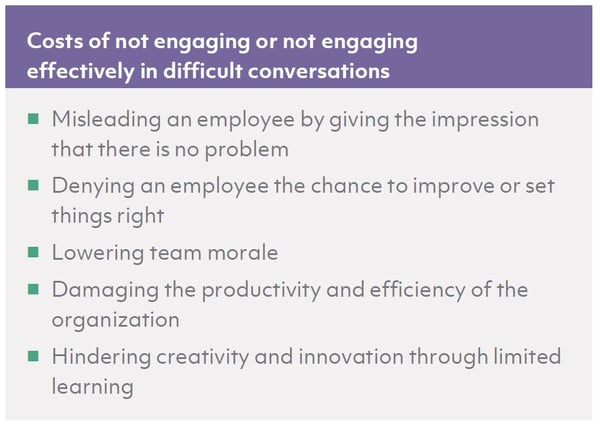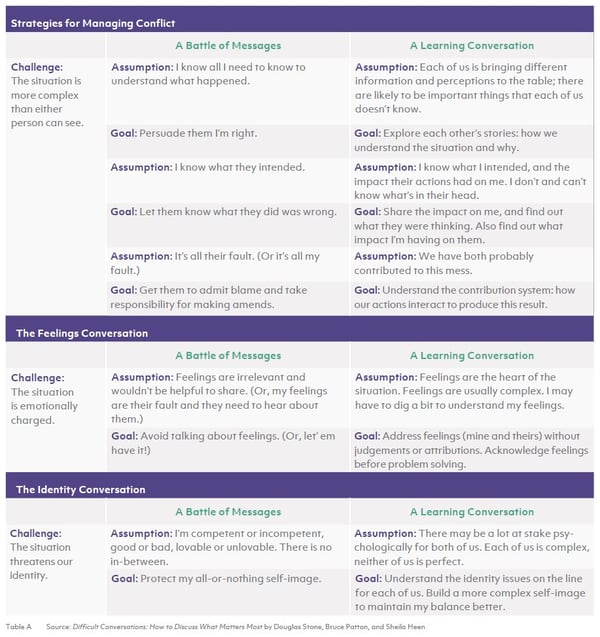
Difficult conversations are an inevitable part of work life (and personal life) — addressing poor performance, arguing over budget allocation, project planning across functions when there is disagreement on approach, saying “no” to a colleague, informing a customer of a delayed delivery — the list is endless. We dread these conversations and often avoid them or stumble our way through them.
There are multiple elements within such an interaction that are often anxiety-inducing: antagonist counterparts, the discussion of controversial or high stakes issues, and emotional outbursts to name a few. There is also the inherent apprehension that having the conversation will result in unintended consequences, such as damaged relationships, rejection, and further conflict. These fears often lead people to not raise an issue that truly needs to be addressed or discussed. However, the impact of not having these conversations can be just as destructive — problems remain unresolved, negative feelings fester, and relationships are damaged. Additionally, the costs to the broader organization can be quite high — a “nice” or “avoidant” culture with limited engagement, low morale and productivity, and minimal organizational learning that hampers creativity and innovation.
The New York Times Business Best seller Difficult Conversations: How to Discuss What Matters Most, coauthored by Bruce Patton, a Partner at Vantage Partners, examined these inter-actions noting that we cannot get rid of difficult conversations, nor should we want to, but we can make them less stressful and more productive. The key to doing this is to turn difficult conversations into more meaningful, learning conversations.
This requires a paradigm shift. Rather than entering a discussion with the purpose of trying to prove a point, or send across a message, a mutual purpose needs to be embraced — the aim is to better understand and acknowledge a counterpart’s interests and how they see the situation, while also caring about one’s own interests. A move from certainty to curiosity is foundational to this paradigm shift. No one has all the information or really knows what is going on for the other person. One needs to get curious and try to understand the other person’s truth — their perception of the situation, the assumptions they are making, and their feelings. As one shares their own experience and truth, they can also make sure to consciously acknowledge their assumptions and avoid casting blame. In this way, one can actively engage in a difficult conversation to generate deeper learning, improve relationships, and develop greater confidence in themselves and in their working relationships.
Table A illustrates three embedded conversations that play out within difficult conversations. Understanding these three underlying conversations will help one change their assumptions and develop different goals for conversations, leading to a change in the tone and outcome of the conversation.

Difficult conversations are particularly challenging to engage in without an organizational culture that encourages individuals to embrace conflict and be open to learning from mistakes. The paradigm shift to a learning conversation requires individuals to become skilled at putting themselves in the shoes of others and demonstrating genuine curiosity about their counterpart, while also becoming better at under-standing their own interests, assumptions, and emotions. These behavioral skills enhance individual relationships and can lead to concrete business results as individuals are better able to face challenges head on.

For more on this topic, please visit our Leadership page.
.png?width=512&height=130&name=vantage-logo(2).png)


